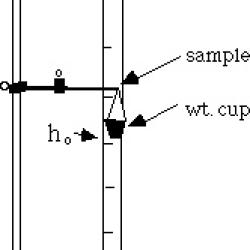Source Institutions
Source Institutions
Add to list Go to activity
Activity link broken? See if it's at the internet archive

In this activity, learners determine the elastic and plastic properties of different types of metal wires. Learners discover that wires of the same gauge, but made of different metals, typically support different loads (masses) before going through the elastic to plastic transition. Learners also learn the difference between elastic deformation, which is recoverable after the load is removed, and plastic deformation, which is not recoverable. Note: one way to save time on this lab is to have different groups test different metals.
- Under 5 minutes
- 45 to 60 minutes
- $1 - $5 per group of students
- Ages 14 - adult
- Activity, Experiment/Lab Activity
- English
Quick Guide
Materials List (per group of students)
- 15 to 20 cm long pieces of 16 or 18 gauge wire of copper, aluminum, steel, etc. (If you did the "Making Metals Strong" activity, you can also test the wires that you saved from that activity.)
- Ring stand
- Adjustable single-burette clamp
- Meter stick
- Small paper cup (a 1-oz paper cup works well)
- Variable masses (lead shot or small ring-washers)
Subjects
-
Engineering and Technology
-
Engineering
- Mechanical Engineering
- Metallurgy and Materials Engineering
-
Engineering
-
Mathematics
-
Data Analysis and Probability
- Data Analysis
- Data Collection
-
Data Analysis and Probability
-
Physical Sciences
-
Motion and Forces
- Gravity
-
Structure and Properties of Matter
- Atomic Structure
- Mass and Weight
-
Motion and Forces
-
The Nature of Science
-
The Scientific Process
- Conducting Investigations
- Gathering Data
- Formulating Explanations
- Communicating Results
-
The Scientific Process
Audience
To use this activity, learners need to:
- see
- touch
Learning styles supported:
- Involves hands-on or lab activities
Other
This resource is part of:
Access Rights:
- Free access
By:
Funding Sources:
- National Science Foundation Education and Human Resource Directorate, ESI 92-53386
- National Science Foundation Center for Advanced Cement Based Materials
- Dow Chemical Foundation
- Materials Research Society
- Iron and Steel Society
- Peoria Chapter of the American Society for Metals
